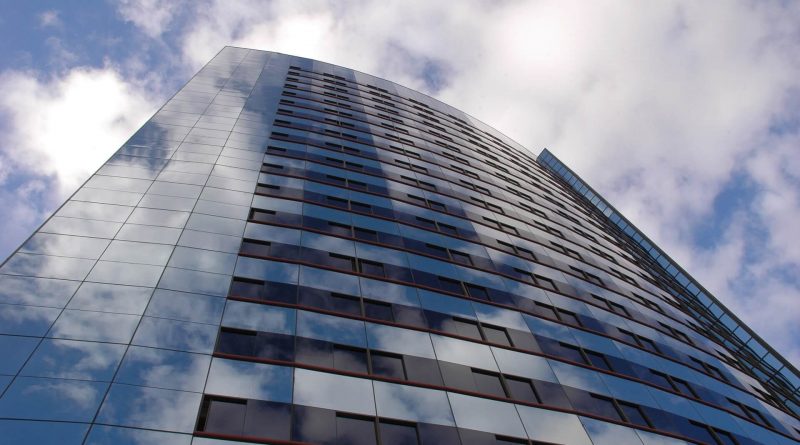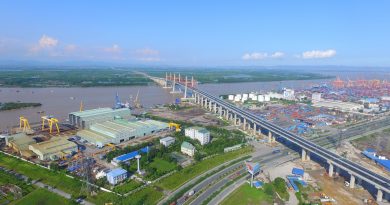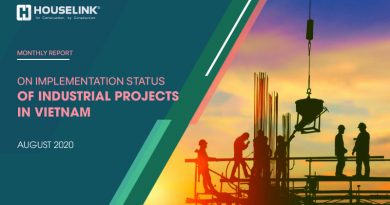Construction Industry Trends for the Next 30 Years
It’s true that trends come and go, yet some have staying power that become the new standards of doing business for decades into the future.
The current status of the growing economy, the shortage of qualified workers, and public-sector financing are transforming the way that construction professionals approach jobs. Beth Ann Bovino, chief U.S. Economist for Standard & Poor’s Rating Services, has said that the economy is nearing a state of normalcy because of lower unemployment rates, growing worker confidence, and the growth of construction projects.
As we look ahead, here are a few construction industry trends that may very well carry on through the next three decades.
Even Taller Buildings
Take a look around the world and you’ll see buildings getting taller and taller by the year. This is a trend that shows no signs of slowing down. Super tall and mega tall buildings are trending towards becoming mini-cities that include residential space, shopping, restaurants, theaters, and offices. Also, architects will need to stand out in a crowded marketplace by designing oddly-shaped buildings that entice our imaginations.
Increased Efficiency of Building Materials
Dr. Ian Pearson of the UK equipment rental firm, Hewden, created a report to predict what the construction industry will look like in 2045. In a review of the report on Construction Junkie, Shane Hedmond notes that these materials go beyond structural elements and glass.
In order to accommodate buildings that are taller, stronger, and more versatile, the construction industry is starting to respond with improved building materials that maximize efficiency. Many of the materials that will be used in 30 years don’t even exist today. For example, Pearson has predicted the emergence of special coatings to make solar panels more aesthetically pleasing.
More Resilient Buildings
The effects of climate change have created an increased demand for resilient buildings that can withstand whatever Mother Nature throws at them. Innovations in materials will likely drive the industry towards lighter and stronger versions of old standards.
Prefab & Offsite Construction Methods
Another trend that we expect to see more of in the decades ahead is an increase in prefab and offsite construction methods. These alternative practices reduce construction time, waste, and unnecessary expenditures. They’re already becoming popular in certain industries, like the healthcare sector, but are expected to expand in the years ahead.
“(Prefab) is up-and-coming. That’s a way to save costs and speed up the time,” said Dominic Thasarathar, Autodesk’s senior industry program manager for construction and natural resources. “Some of the larger owners out there are starting to realize there are efficiencies there, but you have to be doing a certain amount of volume for these kinds of strategies to pay off.”
Innovations in BIM Technology
BIM technology is incredibly important now in 2016, but that importance will only grow in the future. Small and mid-sized construction firms are already starting to embrace this trend that was once reserved for the big companies. Over the next 30 years, BIM will become essential and a valuable means to acquire and analyze key data. This is why at VIATechnik, we have invested heavily in BIM, both in expertise and technology. To stay on top of what’s happening in BIM for our industry, you may want to follow the BIMForum.
The purpose of BIMForum is “to explore technological and delivery innovation and performance improvement through building information modeling and new means of collaboration, to improve the design and construction industry through education and the development of best practices for these innovations, and to help implement these innovations into the broad AEC industry.”
Integration of 3D Printing Technology
There’s a lot of hype that surrounds 3D printing technology, but once it is seamlessly integrated into our everyday construction practices, it can finally be allowed to live up to that hype. We have big expectations and high hopes for 3D printing to make detail work easier and buildings more intricate and artistic.
Emphasis on Eco-Friendly Practices
Given the state of our planet today, green building practices will only become more of a standard in the upcoming decades. According to a report by Dodge Data & Analytics, green building makes up about 26-33 percent of the residential market today and has helped the building market recover after the recession.
This trend will likely continue to grow in the commercial and residential sectors, and LEED certification will become even more important. With each year that passes, more building owners and residential tenants are learning about the benefits of green building construction and renovations to boost energy efficiency and reduce energy costs.
Virtual Reality and Augmented Reality Usage
Marla McIntyre, editor of Construction Executive Tech Trends, recently posed the question of whether the construction industry will adopt AR and VR technologies, asking readers to consider the sheer number–several millions–of AR/VR headsets being sold and shipped globally. The article acknowledges the intuitive and immersive attributes of headsets for construction purposes, while also looking ahead to mixed reality as the possible next frontier. It’s undeniable that more and more people are embracing this new technology and discovering new applications for the AEC industry. The possibilities are virtually endless.
Source: VIATechnik











